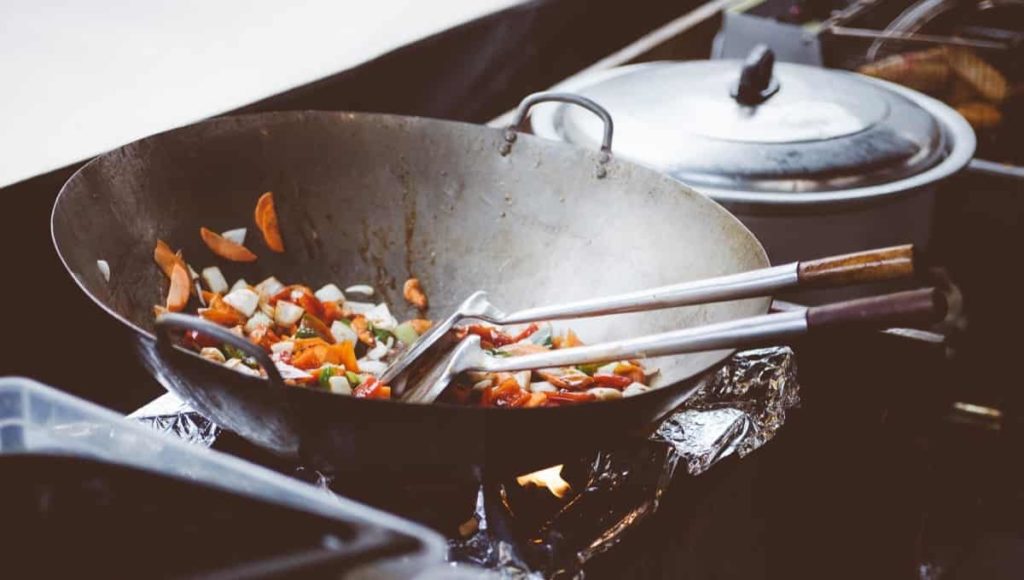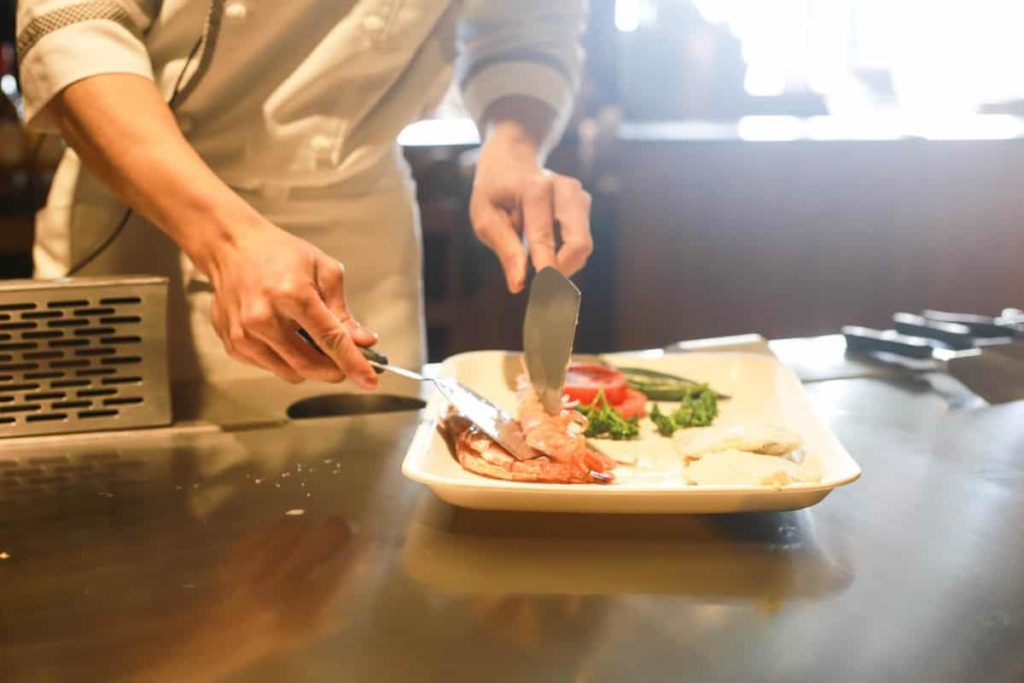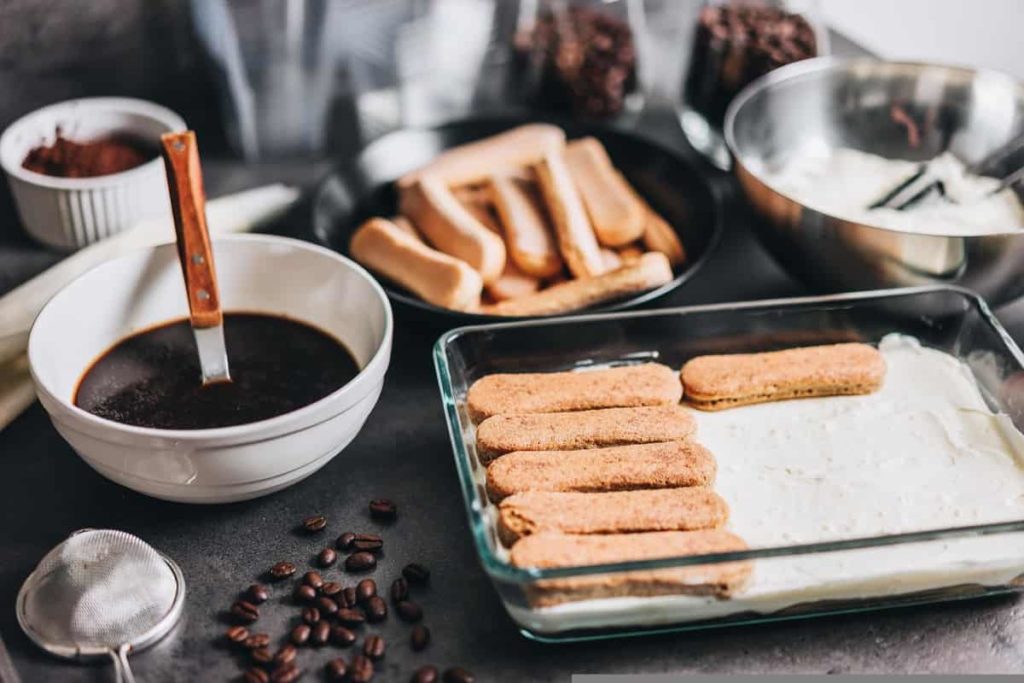Online meal ordering has grown tremendously in popularity over the past several years. As a result, the worldwide Cloud Kitchen Market is predicted to grow at a CAGR of 12.0 percent between 2021 and 2027, reaching USD 71.4 billion. Because of the intense competition in the restaurant industry and the rising demand for meal delivery, several operators have chosen to abandon their brick-and-mortar locations in favor of the more cost-effective cloud kitchens.

If you want to eat in, you’ll have to order online. Those restaurants that solely deliver food are called “cloud kitchens” since they don’t have a physical location where consumers can come in and place an order. Below, we will discuss the cloud kitchen financial model, business plan, and setting up a cloud kitchen in India.
How to make money with cloud kitchen
What is a cloud kitchen?
Digital files are kept in “the cloud,” which means they might be on a server situated anywhere around the globe. When it comes to this situation, we do not care where the server is physically located. Imagine using the internet to place an order for meals from a cloud kitchen, but we are not concerned with the establishment’s physical location where the meal would be cooked.
The use of technologies has resulted in a recent development in the culinary industry known as a cloud kitchen conceivable. To put it more simply, a cloud kitchen is an updated version of a traditional restaurant. The majority of restaurants allow customers to either dine in or take their meal. Cloud kitchens are restaurants without dining rooms or takeaway areas. Orders are taken only by phone or the internet in a cloud kitchen, and the food produced in-house by the kitchen staff is then delivered to the consumer’s location.
This business model is known as “home delivery,” It is the only one used by a cloud kitchen. Cloud kitchens have several features: The concept of a cloud kitchen refers to a restaurant that follows a business strategy that entails providing delivery services and does not provide dine-in or takeout alternatives to its customers. When talking about a typical restaurant, the location is quite essential.
A cloud kitchen might be situated anywhere; what is important is the reputation of the business and the quality of the cuisine offered. One kind of cooking could be the sole option in a cloud kitchen, or it might grow out to include many other styles. There is also the possibility that one cloud kitchen business can house numerous brands, each of which would cater to a different kind of food. Cloud Kitchen eateries can also collaborate with food aggregators such as Swiggy or Zomato to reach a wider audience of potential clients.
In case you missed it: 40 Low Investment Food Business Ideas

Steps to start a cloud kitchen
Choose a location for your cloud kitchen.
Your cloud kitchen doesn’t need to be in a conspicuous place. An industrial zone or a side street in a residential neighborhood would do just fine for this purpose. A cheap rent will result in fewer expenses for brokerage and CAPEX in the long run. Your needs may be met quite well with a 500 square foot area. Be sure you provide a driver’s parking place and a delivery system without interruptions.
Cloud kitchen startup cost
It is less difficult to grow a restaurant than you would believe. If the commercial kitchens are designed with delivery in mind, opening a new site in less than a month is possible. Compared to the prices at traditional restaurants, these are between 40 and 50 percent cheaper. There will be a significant reduction in real estate and labor expenditures.
You can use the money you have saved to cover the early start-up charges. If you do not have enough money, you can seek assistance from family members or close friends. You also can submit a loan request to a financial institution in your community.
License requirements for your cloud kitchen
You need an FSSAI license for a cloud kitchen. First, you must get a license from the FSSAI, which will govern your food’s storage, preparation, and delivery. The license must be renewed regularly and might be valid for anywhere between one and five years at a time. You may want to include the FSSAI number on your product packaging to instill trust in your clients.
Create a platform for your cloud kitchen
To take orders online, Cloud Kitchens must have an online POS system. Orders can be placed via various means, including online food aggregators, order-capable websites, and even phones. Each food aggregator gives a unique tablet for order-taking to accept and manage orders. However, without a point-of-sale (POS), it isn’t easy to keep track of all the orders coming in from all over the web.
In case you missed it: FSSAI License For Food Business In India

Telephone calls are another method of accepting orders. Call-Center Panels are needed for this since they will direct the orders to the appropriate brand and location. In addition, you’ll need a robust POS system to keep track of the number of orders placed under each of your brands while they’re all sold at the same location.
Choose your target audience
A cloud kitchen’s level of success is directly proportional to the demographics of its user base. Therefore, before you launch a cloud kitchen company, you need to have a clear idea of your target audience and the kinds of clients you already have. For instance, the expectations of a family are quite different from those of a young person in their twenties who goes to the gym. Families need well-rounded meals, while those who work out often like foods high in protein.
Before you decide on a cuisine idea, the items offered on the menu, or any marketing strategies, you need first to determine who your customers are. How do you select the most appropriate idea for your cloud kitchen? Determine what customers want. Going online and searching for the answer on Google is one option.
To sell to health-conscious people, find out what they prefer to consume. You can go to various sites, such as Facebook, to learn about the kind of food that the people who make up your target audience enjoy eating. You can research the food habits of various populations in that location.
Know the competition
Find out which of your rivals’ meals are their most popular sellers and what kinds of food they do not provide. Also, which products are in great demand and are doing exceptionally well in sales. For instance, if you see that many consumers purchase gluten-free doughnuts, you might deduce that this is a product with excellent potential.
Choose the right suppliers for your cloud kitchen.
Like a professional restaurant kitchen, you need to choose the finest cloud kitchen provider for your requirements. As long as your brands use the same basic ingredient, you may purchase it from the same provider and the other components from various vendors. You can use the same supplier for all of your brands if they provide a wide range of ingredients. Your cloud kitchen supplier must be just as prompt and exacting in delivering goods and services as a restaurant’s service provider.
In case you missed it: Hospitality And Food Services Business Ideas

In selecting a supplier, be sure that you can set your conditions. Remember that if you wind up getting little units from several manufacturers, it will cost you more. If you are a cloud kitchen, you may be tempted to purchase from multiple suppliers even when it is not necessary to make accounting easy. However, keep in mind that this will cost you more money. The provider will see you as a little client, which means you won’t be able to get a better deal.
Consider all of the ingredients you’ll need from different brands, and then order as many of those items as you can from the same vendor before making a final decision on your provider. In terms of inventory management, you’ll be able to hold one person responsible; it’ll be simpler to coordinate adjustments and save money.
Staffing requirements for your cloud kitchen
Due to the absence of a dine-in or takeout option, a cloud kitchen does not need any wait staff; however, it does necessitate an experienced kitchen crew. Because the consumer will have no other experience, the quality of the meal you provide them must be impeccable. As a result, it is essential to invest in highly competent chefs who can choose the products on the menu and effectively prepare them.
In a cloud kitchen, several companies’ food may be prepared by the same chef, or there may be many chefs who are allocated explicitly for each brand’s cuisine. It is possible to run a cloud kitchen effectively with only two to three chefs and a few assistants. Aside from that, the only other employees you will need are kitchen assistance and delivery guys if you want to have an in-house delivery system.
Process orders in a cloud kitchen
In a cloud kitchen, orders are handled the same way as regular orders are. The only difference is that each order may come from a different brand, and as a result, the distinctive flavor of each one must be preserved. This presents a challenge. Chefs for multiple brands or separate cooking rooms for each brand’s crew might be used to solve this problem.
Orders can be shown on the kitchen display screen with the aid of the Kitchen Display System installed in the POS. When an order is approved, it appears on the kitchen’s Kitchen Display System, where your personnel may see the order’s specifics. After the chef has finished preparing the order, he may mark it as “done” on the Kitchen Display System and send it to the parking area.
In case you missed it:How to Sell your Packaged Food Products Online?

After that, the packing crew members pack the order and send it to the Delivery Center. The point of sale system records each step, including order acceptance, preparation, packing, and delivery. You would be able to assess and improve the time spent preparing the order using this information. You can record any delays that occur at any particular stage and then take action to speed up the process.
Packaging your cloud kitchen orders
The packaging is the sole thing that connects you with your consumers. Creative packaging can help you grow your business’s brand. Instead of using plastic, you may package meals in biodegradable containers to lessen your carbon impact. Contamination can be avoided if the food is securely packaged.
Delivering your cloud kitchen orders
You will need to choose a reliable driver. When food is delivered in a timely and correct manner, it satisfies many satisfied consumers. You might also utilize online meal delivery services such as Swiggy and Zomato to simplify the logistics of your operation.
Market your cloud kitchen
Marketing for a cloud kitchen is significantly different from a traditional restaurant since there is no physical location for the business to operate. The lack of a physical entry point for clients means that the public will never see a cloud kitchen. You’ll need a strong marketing and branding plan to make up for this.
You must have an online presence since the Cloud Kitchen concept does not allow you to have a physical presence. Customers will be able to locate your eateries thanks to this virtual address quickly. Having a website and various social media accounts will not be enough. The only way they have to stay in touch with your clients is via your website. Thus you must keep it updated and engaging as often as possible.
Make eye contact with the audience and respond to any unfavorable criticism right then and then. Remember that your most loyal consumers are your followers. Zomato, Swiggy, and Foodpanda are some of the most popular applications for ordering food nowadays. You must work closely with them. Because these platforms handle the delivery, you’ll receive more home-delivery orders, and the delivery expense won’t come out of your wallet.
In case you missed it: How to Start an Organic Food Business in India: Step by Step Guide

In addition, having a presence on these sites can help you get found by new clients. Most consumers who use these applications to place orders do not know if they are placing their order with a restaurant, a kitchen specializing in delivery solely, a “ghost kitchen,” or a “cloud kitchen.” If you want to get noticed, integrate all of your distribution networks so clients can quickly try new places.
To enhance your brand’s awareness and encourage more people to experience your food, you can explore working with businesses that aren’t direct rivals. This advertising isn’t limited to competing restaurants; you can use it inside your own cloud kitchen’s brand names.
Cloud kitchen profit margin in India
The number of restaurants transforming themselves into cloud kitchens is at an all-time high, further increasing competitiveness. This practice is common in restaurants for several compelling reasons. The typical profit margin for a restaurant is three percent, but the cloud kitchen profit margin is close to ten percent.
- Handicraft Making at Home: A Small Profitable Business Idea
- Pet-Tech Startups: Innovations for Animal Lovers
- Tech Repair Services: Meeting the Demand for Gadget Maintenance
- Maximizing Rewards: Smart Credit Card Habits for Cashback and Points
- Ultimate Guide to Making Money from Goat Milk Business
- How to Start an Agricultural Value Added Product Business
- Value-Added Business Ideas for Greenhouse: The Best Ways to Make Profits with Greenhouse Farming
- How to Make Profits with Organic Country Chicken: Best Strategies for Beginners
- 10 Value-added Business Ideas for Millets: Low-investment and Highly Profitable
- Why Cleaning Service Business Becoming More Profitable in Metro Cities in India
- 10 Best Businesses to Start in Ayodhya for Profits
- Top Drone Business Ideas in India: Unlocking Aerial Innovation & Opportunities
- Top 10 Service Businesses You Can Start with No Money
- Ultimate Guide to Starting a Home-Based Advertising Agency Business
- Starting a Nail Salon Near Your Location: Check List, Business Plan, Licensing, and Opening Instructions
- Construction Company Name Ideas: Guide to Create New Construction Company Names
- 8 Best Small Businesses to Start in Hyderabad: Low-Cost and Profitable
- 10 Best Small Businesses to Start in Massachusetts: Low-Cost and Profitable
- 10 Best Small Businesses to Start in Maryland: Low-Investment and Profitable
- 10 Best Small Businesses to Start in Delaware: Low-Investment and Profitable
- 10 Best Small Businesses to Start in Connecticut: Low-Investment and Profitable
- Top 10 Best Online Pet Business Ideas: Exploring Cats to Dogs
- 10 Best Small Businesses to Start in Colorado: Low-Investment and Profitable
- Top 10 Profitable Small Business Ideas in California: Low-Investment Tips
- From Little Rock to Fayetteville: Top 10 Profitable Small Business Ideas in Arkansas
- Top 10 Profitable Small Business Ideas in Alabama: Discover Opportunities in Alabama’s Growing Cities
- Top 10 Profitable Small Business Ideas in Arizona: Discover Opportunities in Arizona’s Growing Cities
- Golf Business Ideas: Exploring Golf Course Money Making Ideas
- Low Capital Profitable Small Farm Ideas: Farming Ideas to Make Money
- How to Write a Business Plan for Daycare: Exploring from Financial Projections to Risk Management
- Home Daycare License Requirements: Exploring State-wise In-home Daycare Requirements
- How Profitable is Day Care Business: How Much Does a Daycare Owner Make a Month or Year?
- How to Open a Daycare Center in Toronto, Canada: Business Plan, Licenses and Permits
- How to Start Meal Prep and Delivery Services: A Popular Business Idea
- How to Start a Milk Chilling Plant Business
- How to Start Coconut Shell Charcoal Business: Business Plan for Maximizing Profits